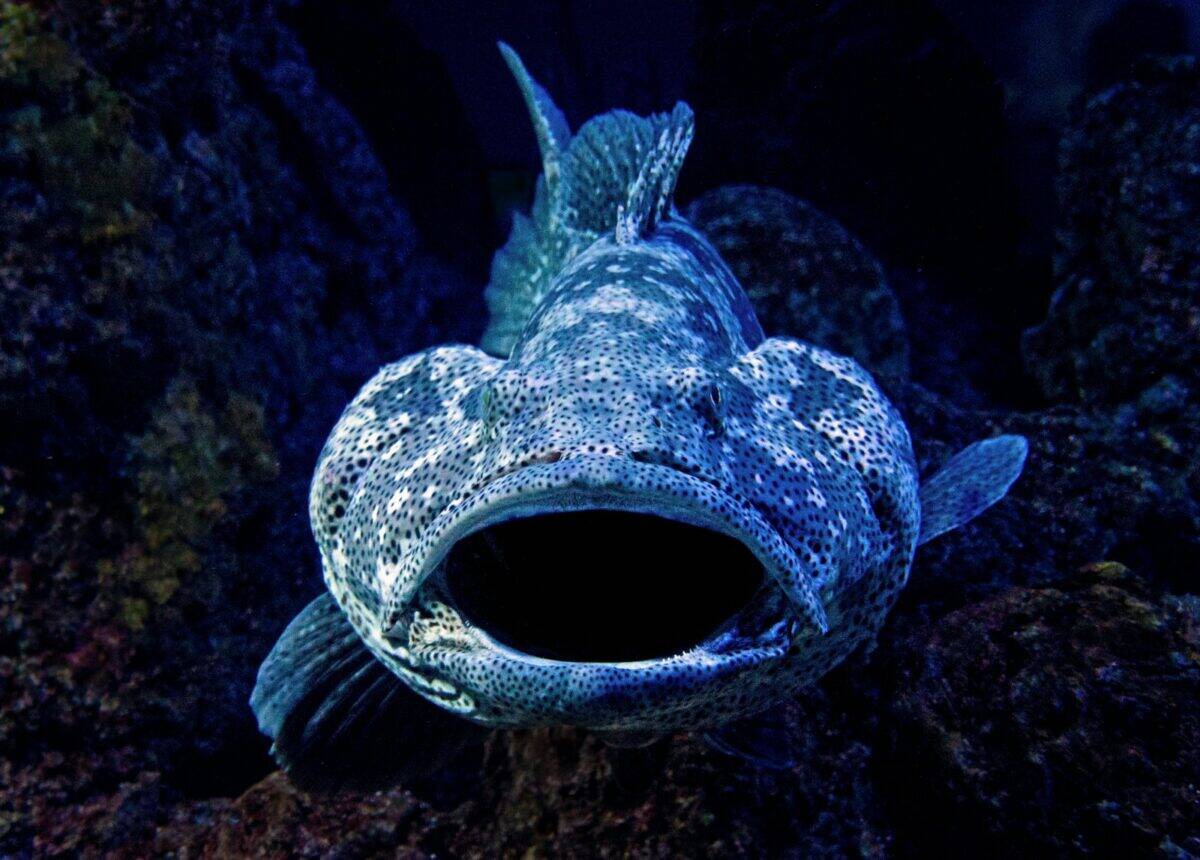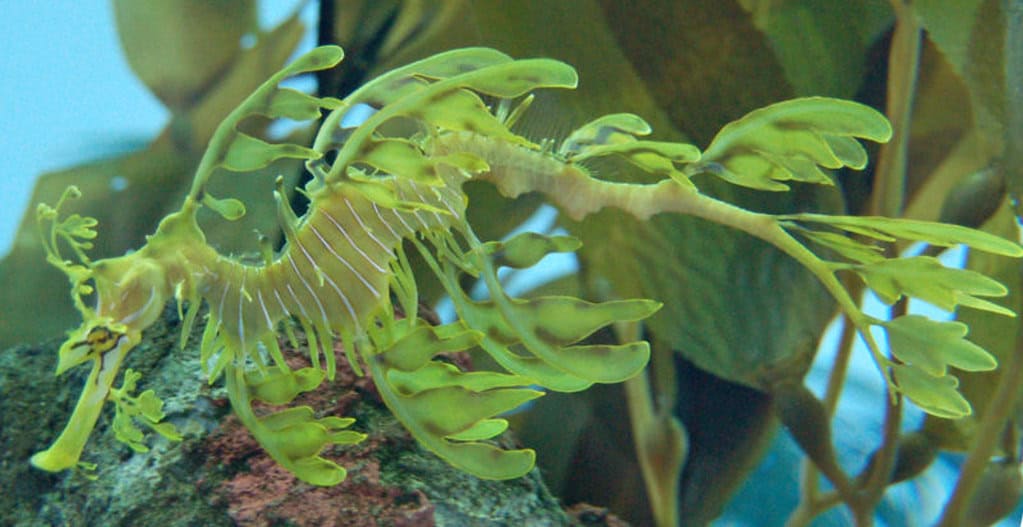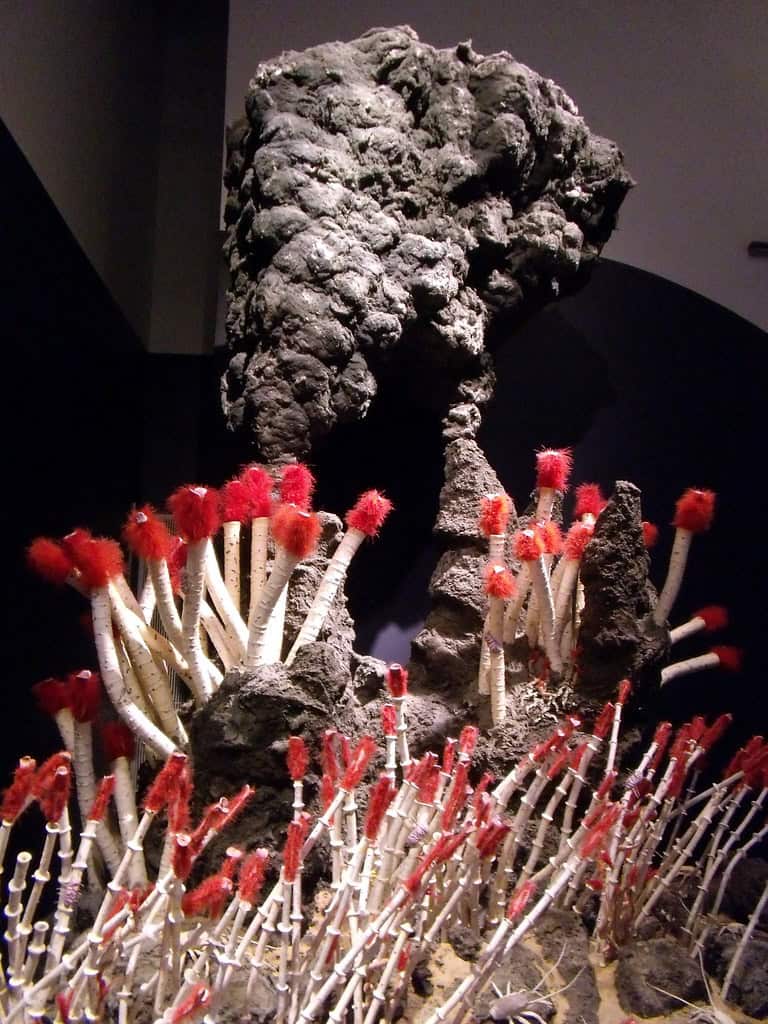The ocean covers more than 70% of our planet, yet we’ve explored less than 5% of it. Hidden beneath the waves lies a world so bizarre and otherworldly that it makes science fiction look ordinary. From creatures that glow like living Christmas trees to animals that can regenerate entire body parts, the deep sea harbors life forms that seem to have been designed by an alien intelligence. These remarkable beings have evolved extraordinary adaptations that allow them to thrive in one of Earth’s most extreme environments, where crushing pressure, eternal darkness, and freezing temperatures rule supreme.
12. Vampire Squid – The Living Fossil That Turns Itself Inside Out

The vampire squid might have the most terrifying name in the ocean, but this deep-sea dweller is actually quite harmless. When threatened, this remarkable creature performs one of nature’s most dramatic magic tricks by turning itself completely inside out, revealing spines and photophores that make it look like a glowing, spiky ball. Living at depths of 2,000 to 3,000 feet, where oxygen levels are so low that most animals can’t survive, the vampire squid has evolved a unique metabolism that allows it to thrive in this oxygen-starved environment. Its large, blue eyes are proportionally the largest of any animal on Earth, perfectly adapted to capture the faintest traces of light in the perpetual darkness of the deep ocean. Perhaps most alien-like of all, when it feeds, it extends a long, sticky filament to catch marine snow – a shower of organic particles that drift down from the surface like underwater confetti.
11. Anglerfish – The Deep Sea’s Living Lure

Imagine a creature that carries its own fishing rod, complete with a glowing lure that would make any sci-fi movie proud. The anglerfish has evolved one of the most ingenious hunting strategies in the animal kingdom, using a bioluminescent appendage called an illicium to attract prey in the pitch-black depths. This living fishing rod contains bacteria that produce light through a chemical reaction, creating a mesmerizing glow that draws curious fish right into the anglerfish’s massive, tooth-filled mouth. But perhaps the most alien aspect of these creatures is their reproduction – in many species, the tiny male permanently fuses to the female’s body, becoming nothing more than a sperm-producing appendage. Some female anglerfish can have multiple males attached to them, creating a bizarre living constellation that seems more like something from a horror movie than reality.
10. Barreleye Fish – The Transparent-Headed Mind Reader

The barreleye fish looks like it swam straight out of a mad scientist’s laboratory, with its completely transparent head and tubular eyes that can rotate like tiny green telescopes. This otherworldly creature lives in the twilight zone of the ocean, where only the faintest glimmer of sunlight penetrates, and its unique anatomy is perfectly suited for this environment. The fish’s transparent head allows its tubular eyes to look upward through its skull, scanning for the silhouettes of prey against the dim light filtering down from above. When it spots a potential meal, it can rotate its eyes forward to track the prey as it moves in for the kill. The green color of its eyes comes from a special pigment that filters light, acting like natural sunglasses that help it see more clearly in the low-light conditions of the deep ocean.
9. Gulper Eel – The Living Sleeping Bag

The gulper eel is essentially a living sleeping bag with teeth, capable of unhinging its massive jaw to swallow prey much larger than itself. This remarkable creature can grow up to six feet long, but most of that length is just mouth and stomach, making it look like a swimming sock with an attitude. When it encounters a large meal, the gulper eel’s stomach expands like a balloon, allowing it to consume fish that are significantly bigger than its normal body size. Its whip-like tail is tipped with a bioluminescent organ that it uses to lure prey, waving it around like a glowing fishing line in the darkness. Living at depths of up to 10,000 feet, where food is scarce, this extreme adaptation allows the gulper eel to take advantage of any meal opportunity that comes its way, no matter how large.
8. Dumbo Octopus – The Flying Elephant of the Abyss

Named after Disney’s famous flying elephant, the dumbo octopus is arguably the most adorable alien-looking creature in the deep sea. This enchanting cephalopod lives at depths of up to 23,000 feet, making it the deepest-living octopus known to science. Its ear-like fins flutter gracefully as it glides through the water, giving it an almost ethereal appearance that seems to defy the harsh reality of the deep ocean environment. Unlike its shallow-water cousins, the dumbo octopus has evolved to live in the crushing pressure of the abyss, where the weight of water above would instantly crush most surface creatures. Its gelatinous body and unique propulsion system allow it to move efficiently through the water column, while its large eyes help it spot prey and predators in the dim light of the deep ocean.
7. Frilled Shark – The Living Fossil

The frilled shark is like discovering a living dinosaur swimming in the depths of the ocean, virtually unchanged for over 80 million years. This primitive predator has retained features that disappeared from most shark species eons ago, making it a swimming time capsule that offers a glimpse into the ancient past. Its most distinctive feature is its six pairs of gill slits with frilly edges, which give it its name and create an almost alien collar around its neck. The frilled shark’s jaws are lined with over 300 needle-sharp teeth arranged in 25 rows, designed to trap slippery prey like squid and other deep-sea creatures. When hunting, it strikes like a snake, coiling its body and lunging forward with lightning speed to catch its prey, a hunting strategy that seems more reptilian than fish-like.
6. Leafy Sea Dragon – The Ocean’s Shape-Shifter

The leafy sea dragon is nature’s ultimate master of disguise, adorned with elaborate leaf-like appendages that make it virtually invisible when drifting among kelp forests. This otherworldly creature looks more like a piece of floating seaweed than a living animal, with its body covered in ornate, translucent fins that sway gently with the current. Unlike most fish, the leafy sea dragon has no prehensile tail for grasping objects, instead relying on its perfect camouflage and slow, deliberate movements to avoid detection by predators and prey alike. Perhaps most alien of all, it’s the male leafy sea dragon that carries and incubates the eggs, with the female depositing up to 250 bright pink eggs onto a special brood patch on the male’s tail. The eggs remain attached for about eight weeks, during which the male provides nutrients and protection until the tiny dragons are ready to hatch.
5. Goblin Shark – The Alien Jaw-Dropper

The goblin shark looks like it was designed by a committee of horror movie directors, with its extendable jaw that shoots out like a high-speed projectile to catch prey. This living fossil has remained virtually unchanged for over 125 million years, earning it the nickname “the alien of the deep.” When hunting, the goblin shark can extend its jaws up to 3 inches beyond its mouth, creating a nightmarish spectacle that happens faster than the human eye can follow. Its long, flattened snout is packed with electroreceptors that can detect the electrical fields generated by other living creatures, making it the perfect deep-sea predator. The goblin shark’s soft, flabby body and pinkish coloration come from its blood vessels showing through its semi-transparent skin, giving it an almost ghostly appearance that adds to its alien mystique.
4. Mantis Shrimp – The Rainbow Warrior

The mantis shrimp is arguably the most alien creature in the ocean, possessing superpowers that would make any comic book hero jealous. These colorful crustaceans have the most complex eyes in the animal kingdom, with 16 different types of color receptors compared to humans’ measly three, allowing them to see colors we can’t even imagine. Their club-like appendages can strike with the force of a bullet, generating cavitation bubbles that collapse with the intensity of a sonic boom, capable of cracking aquarium glass and stunning prey instantly. The mantis shrimp can process visual information so quickly that it can track the wings of a flying bird, making it the Ferrari of the crustacean world. Some species can even produce light through bioluminescence, creating dazzling displays that serve as both communication and intimidation tactics in the coral reef communities where they live.
3. Blobfish – The Misunderstood Alien

The blobfish has become an internet sensation for all the wrong reasons, but this gelatinous creature is actually perfectly adapted for life in the deep ocean. At depths of 2,000 to 4,000 feet, where the pressure is 60 to 120 times greater than at sea level, the blobfish’s jelly-like body maintains its shape and allows it to float effortlessly above the seafloor. Its lack of muscles and bones, which makes it look so bizarre when brought to the surface, is actually a brilliant adaptation that allows it to survive in an environment where most creatures would be crushed instantly. The blobfish doesn’t actively hunt for food but instead sits and waits for edible matter to float by, conserving energy in an environment where food is scarce. When decompressed during its journey to the surface, the blobfish transforms from a normal-looking fish into the droopy, blob-like creature that has captured the internet’s attention.
2. Giant Tube Worms – The Volcanic Gardeners

Giant tube worms are perhaps the most alien creatures on Earth, thriving in environments so extreme that they seem to belong on another planet entirely. These remarkable animals live around hydrothermal vents on the ocean floor, where temperatures can reach 750°F and toxic chemicals spew from the Earth’s crust like underwater volcanoes. Instead of relying on sunlight like most life on Earth, giant tube worms have formed a partnership with bacteria that convert poisonous hydrogen sulfide into energy through chemosynthesis. The worms have no mouth, stomach, or digestive system, instead housing billions of these bacteria in their bodies and living off the nutrients they produce. Growing up to 8 feet long and living for over 300 years, these crimson-colored creatures create underwater oases of life in some of the most hostile environments on our planet.
1. Sea Pig – The Vacuum Cleaner of the Abyss

Sea pigs are the strangest-looking creatures in the deep ocean, resembling inflated pigs with legs that waddle across the seafloor in massive herds. These bizarre animals are actually a type of sea cucumber that has evolved to live in the deepest parts of the ocean, where they form enormous congregations that can stretch for miles across the abyssal plains. Their inflated bodies are perfectly adapted for life under crushing pressure, while their leg-like appendages allow them to walk across the muddy seafloor in search of organic matter to eat. Sea pigs play a crucial role in the deep-sea ecosystem, acting like living vacuum cleaners that process organic material that falls from the surface waters above. Perhaps most remarkably, these creatures can sense chemical signals in the water and coordinate their movements with thousands of other sea pigs, creating massive migrations that look like underwater cattle drives in the pitch-black depths of the ocean.
Conclusion

The ocean continues to reveal creatures that challenge our understanding of what life can become when pushed to its limits. These twelve remarkable animals represent just a tiny fraction of the alien-like adaptations that exist in our planet’s vast underwater realm. From the vampire squid’s inside-out defense mechanism to the sea pig’s coordinated migrations across the abyss, each creature tells a story of evolution’s incredible creativity in the face of extreme challenges. As we continue to explore the depths of our oceans, who knows what other otherworldly beings we might discover lurking in the darkness below. What would you expect to find in the unexplored depths of our own planet’s final frontier?
- 12 Sea Creatures With Alien-Like Adaptations - August 12, 2025
- 14 Wild Animals That Navigate Using the Stars - August 12, 2025
- 14 Things Only Ferret Owners Will Understand - August 12, 2025

